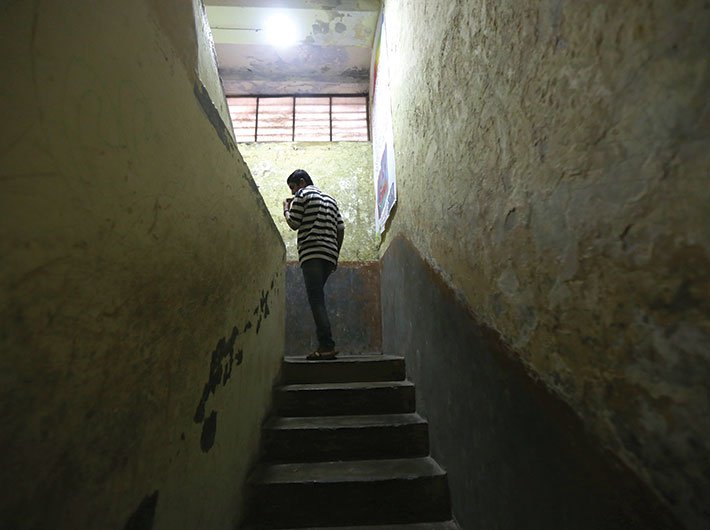Fix responsibilities, build infrastructure to keep homeless children away from drugs
Delhi has approximately 70,000 homeless children, more than any other Indian city. These children, on an average, are slightly over 12 years old. The lowest estimate of drug addiction among them is 36 percent and the highest is 80 percent. A large proportion of children, below 10 years of age, grow up routinely consuming tobacco and sniffing white fluid inhalants – glues and whiteners. A report titled ‘Drug Abuse Among Street Children in Delhi’, by Vidhi Centre for Legal Policy, looks at the laws for the treatment and rehabilitation of Delhi’s drug-addicted children.
The government seems to have been doing a lot to address the problems of these children, at least on paper. The fight against the malaise relies on two laws: The Narcotic Drugs and Psychotropic Substances (NDPS) Act, 1985 that ensures treatment and rehabilitation of all the addicts and the Juvenile Justice (Care and Protection of Children) (JJ) Act, 2015 (which replaced the JJ Act, 2000) that addresses specifically to the needs of children addicted to drugs.
Multiple ministries handle implementation with unclear division of responsibilities and, unsurprisingly, tend to work in silos. For instance, the ministry of social justice and empowerment (MoSJE) handles drug demand reduction, while the ministry of health and family welfare (MoHFW) conducts treatment and rehabilitation of drug addicts. Both the ministries are mandated to fund de-addiction and rehabilitation programmes.
MoSJE runs a scheme for prevention of alcoholism and substance abuse since 1985, which partially funds eligible agencies (that is, NGOs) for setting up Integrated Rehabilitation Centres for Addicts (IRCAs) and counselling centres. At the same time, the MoHFW, which is mandated to run treatment and rehabilitation programmes, funds organisations like the National Drug Dependence Treatment Centre (NDDTC) and AIIMS, among others. At present, the two ministries neither share resources nor finance joint operations that can address child welfare comprehensively.
The JJ Act 2015 categorises drug-addicted children as those who are in need of care and protection and provides for their care through an elaborate mechanism. Briefly, a child who falls within the category of ‘in need of care and protection’ has to be brought, within 24 hours, before the child welfare committee (CWC) (each district is required to have at least one). After that, a social investigation report needs to be prepared within 15 days. The CWC can then direct the child to be placed in an approved drug treatment centre. The Juvenile Justice Board, which deals with children in conflict with the law (those who have committed a crime), can also direct children to rehabilitation centres if they are found to be addicted.
Delhi has seven such CWCs. At the Mayur Vihar CWC, for instance, drug -addicted children are only referred to Society for Promotion of Youth and Masses (SPYM), a registered IRCA for boys, although there are four other IRCAs in Delhi. This is apparently because there is no written order allowing them to refer the children to other IRCAs or the NDDTC. The treatment at SPYM reportedly includes detoxification, psychotherapy and counselling. The children are not referred to NDDTC, which is a specialised clinic for adolescents and has experienced doctors but reportedly lacks adequate supporting staff. So the children there have to be accompanied by guardians, which is often difficult for street children.
The reason for the shortage of supporting staff cannot be attributed to lack of funds. An RTI reply revealed that over the years the NDDTC’s unspent amounts rose steadily from Rs 36 lakh in 2012-13 to Rs 57 lakh in 2013-14 and Rs 1.03 crore in 2014-15. Keeping the treated children away from drugs, a key element of de-addiction, is an even bigger challenge. Although SPYM claims to follow-up with every child for six months, it is not clear how successful they are in ensuring that the child stays away from drugs. The shortage of social workers in the CWCs implies that they are unable to follow-up regularly with at-risk children. Also, in cases where the children’s families could not be traced or the children did not want to return to their family, the only option is to send them to poorly managed children’s homes, which are inadequately equipped to ensure non-exposure to drugs (or sexual abuse). There is no systematic coordination to ensure that the children return to schools post de-addiction treatment, as per the Right to Education Act.
The government’s budgetary allocations are a window to its priorities. According to a report by the HAQ Centre for Child Rights, in the union budget of 2016-17, there has been significant decrease of 14.4 percent in the fund allocation share for the protection of children. The report has raised concerns about the falling budget allocation for health and education of children. Tellingly, in spite of lip service by policy makers on child welfare, there is no specific scheme that allocates funds for child drug addicts or the welfare of street or homeless children.
Fixing the challenge requires a sea-change in how society and government views these minor addicts. Consulting all stakeholders collectively, providing clear demarcation of responsibilities and oversight, investing in adequate infrastructure and training of staff to ensure a robust juvenile justice system, allocating adequate funds and treating the problem as a healthcare management issue integrated with the existing healthcare system would make for a good beginning.
Sanyal is an associate fellow at Vidhi Centre for Legal Policy.
(The article appears in the November 1-15, 2016 issue)


